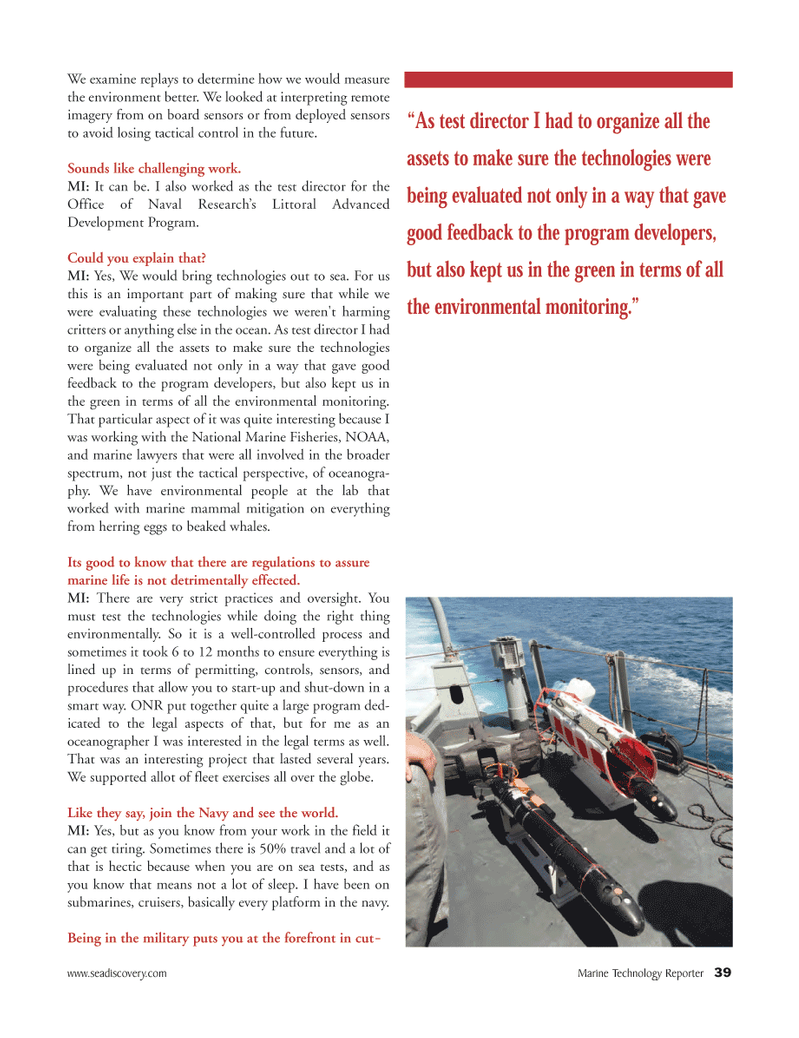
Page 39: of Marine Technology Magazine (May 2012)
Hydrographic Survey
Read this page in Pdf, Flash or Html5 edition of May 2012 Marine Technology Magazine
www.seadiscovery.com Marine Technology Reporter 39We examine replays to determine how we would measure the environment better. We looked at interpreting remote imagery from on board sensors or from deployed sensors to avoid losing tactical control in the future. Sounds like challenging work. MI:It can be. I also worked as the test director for the Office of Naval Research?s Littoral Advanced Development Program. Could you explain that? MI: Yes, We would bring technologies out to sea. For us this is an important part of making sure that while we were evaluating these technologies we weren't harming critters or anything else in the ocean. As test director I had to organize all the assets to make sure the technologies were being evaluated not only in a way that gave good feedback to the program developers, but also kept us in the green in terms of all the environmental monitoring. That particular aspect of it was quite interesting because I was working with the National Marine Fisheries, NOAA, and marine lawyers that were all involved in the broader spectrum, not just the tactical perspective, of oceanogra- phy. We have environmental people at the lab that worked with marine mammal mitigation on everything from herring eggs to beaked whales. Its good to know that there are regulations to assure marine life is not detrimentally effected. MI: There are very strict practices and oversight. You must test the technologies while doing the right thingenvironmentally. So it is a well-controlled process and sometimes it took 6 to 12 months to ensure everything is lined up in terms of permitting, controls, sensors, and procedures that allow you to start-up and shut-down in a smart way. ONR put together quite a large program ded- icated to the legal aspects of that, but for me as anoceanographer I was interested in the legal terms as well. That was an interesting project that lasted several years. We supported allot of fleet exercises all over the globe. Like they say, join the Navy and see the world. MI: Yes, but as you know from your work in the field it can get tiring. Sometimes there is 50% travel and a lot of that is hectic because when you are on sea tests, and as you know that means not a lot of sleep. I have been on submarines, cruisers, basically every platform in the navy. Being in the military puts you at the forefront in cut -?As test director I had to organize all the assets to make sure the technologies were being evaluated not only in a way that gave good feedback to the program developers, but also kept us in the green in terms of all the environmental monitoring.? MTR#4 (34-49):MTR Layouts 4/27/2012 9:44 AM Page 39

 38
38

 40
40
